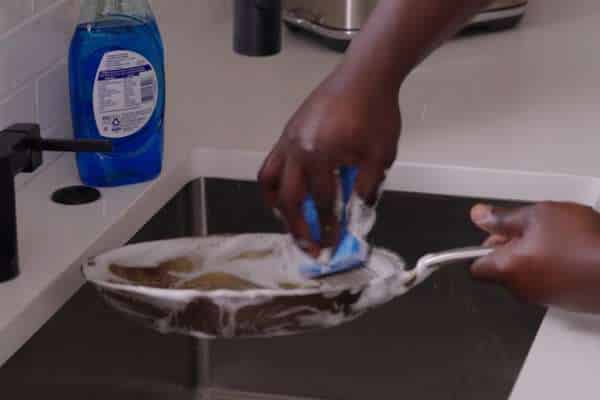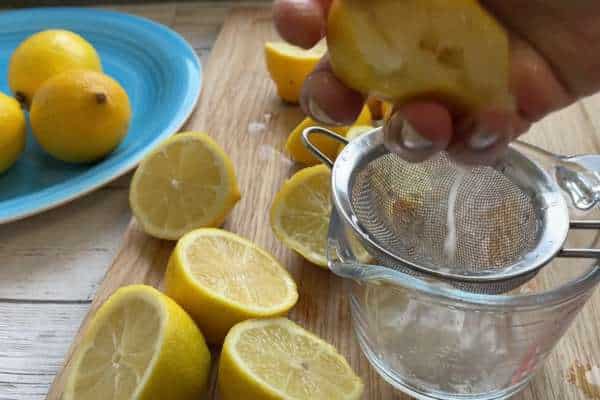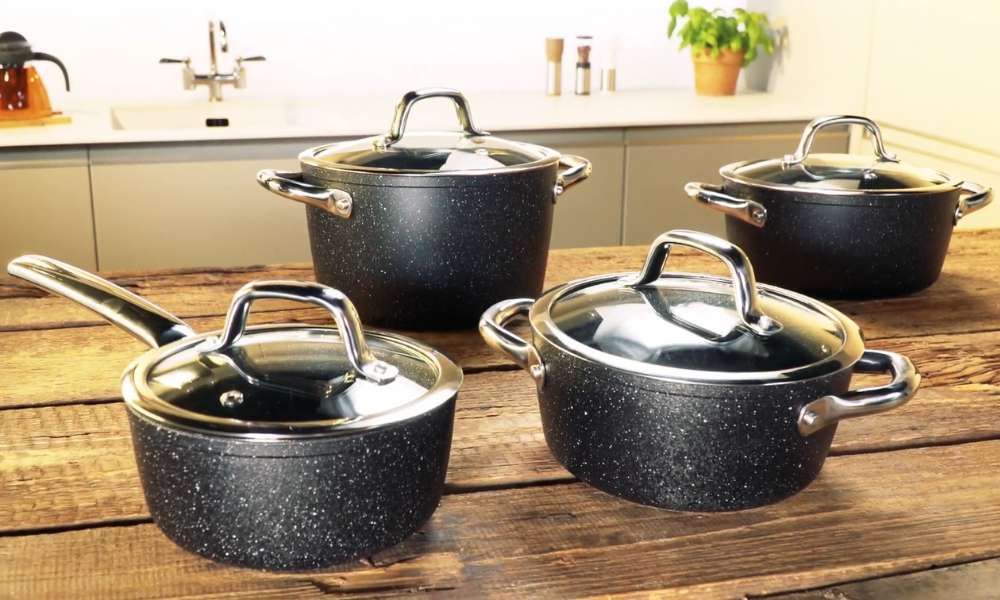Stone cookware, Made of materials such as granite or marble, Has become increasingly popular in recent years due to its durability, Non-Stick properties, And the ability to distribute heat evenly. However, Like any cookware, It requires regular cleaning to maintain its performance And prolong its lifespan. Cleaning And maintaining stone cookware can be a challenge for those new to this type of cookware.
In this comprehensive guide, I will outline the best techniques And practices for how to clean your stone cookware, while preserving its integrity And extending its lifespan. I will discuss the various types of stone cookware, Recommended cleaning agents, As well as tips And tricks to tackle stubborn stains And residue.
What is Stone Cookware?
Stone cookware refers to a type of cooking Equipment that is either made from or coated with a layer Of stone-like material. This material is often a blend Of crushed stones, minerals, And ceramic, Which gives the Cooking vessels their unique properties.
This cookware is known for its durability, Non-Stick surface, And even heat distribution. It is also scratch-resistant And can with high temperatures, Making it a popular choice for various cooking techniques, Such as frying, baking, And sautéing.
Additionally, Because it doesn’t require a large amount of oil or butter for cooking, It is often considered a healthier option compared to Traditional non-stick cooking vessels.
1. Allow the Cookware to Cool Down Completely
Allowing your cookware to cool completely before cleaning it is an essential step in maintaining its longevity. This is especially true for stone Cooking vessels, which can be sensitive to sudden temperature changes. After cooking, the temperature of your Cooking vessels will be high, And cleaning it immediately may crack or damage the surface.
When cooking with these Cooking vessels, it is important to remember that the heat is evenly distributed throughout the ingredients. This means that the entire pot or pan will retain heat after you turn off the stove. By allowing your Cooking vessels to sit And cool naturally, you are giving time to dissipate this residual heat without causing any stress or damage.
2. Use Warm Water And a Soft Sponge to Clean the Cookware
Once the cookware has cooled, Fill your sink with warm water And submerge the Cooking vessels for A few minutes to help loosen any residue. Use a soft sponge to gently wipe the surface of the Cooking vessels, Removing any loose food particles. Then soak the Cooking vessels in warm water for A few minutes to loosen any stubborn stains or residue.
Next, Use a soft sponge to gently scrub the surface of the Cooking vessels in circular motions, Be careful not to use abrasive materials that could scratch or damage the surface. Clean Magnalite Cookware And Stone Cookware are two popular types of Cooking vessels that require special attention when cleaning.
3. Add A Small Amount of Mild Dish Soap to the Sponge And Gently Scrub the Cookware

Before starting to scrub, Make sure that you rinse off any excess food particles from the surface using warm water. Once rinsed, Apply a small drop of mild dish soap onto a damp sponge And start scrubbing gently in circular motions. Be cautious not to use too much soap, As it can leave a residue on the surface that may affect the taste of your food.
4. Rinse the Cookware Thoroughly with Clean Water
After Scrubbing the Cooking vessels with soap, Rinse them thoroughly with clean water to remove any soap or residue. When rinsing your stone cookware, Be sure to use clean water that’s free from any impurities or chemicals. You can simply run it under tap water for a few seconds, Making sure all surfaces are fully covered.
It’s also important to avoid using abrasive sponges or brushes When rinsing, As this can scratch the surface of the kitchen vessels And damage their non-stick properties. Make sure to rinse it well to ensure no soap remains on the Cooking vessels.
5. Use a Mixture of Baking Soda And Water
For stubborn stains or burnt-on food, Prepare a paste by mixing equal parts baking soda And water. Apply the paste to the affected areas And gently scrub with a soft sponge or cloth. After applying the mixture Rinse the cookware thoroughly with water afterward to remove any residue. And You’ll be amazed at how clean And shiny your Cooking vessels look! This method of cleaning is not only effective But also non-toxic And Environmentally friendly.
6. Use a Mixture of Salt And Lemon Juice

Another natural cleaning solution for stubborn stains is a mixture of salt And lemon juice. Simply sprinkle some salt onto the surface of your stone cookware, then pour on enough lemon juice to form a paste. Use a soft-bristled brush or sponge to scrub the surface, focusing on any particularly stubborn stains. Rinse well with water afterward. The acidity of the lemon juice will break down grease And grime while the abrasiveness of the salt helps lift it away from the surface.
Not only is this method effective at cleaning stone kitchen utensils, but it’s also eco-friendly And affordable. Lemon juice is naturally antibacterial And deodorizing, making it great for sanitizing surfaces without using harmful chemicals. This method also does not involve the use of any harsh chemicals that can damage the surface of your Cooking vessels.
7. Use A Specialized Stone Cookware Cleaner
If your Cooking vessels still have persistent stains, consider using a specialized stone cookware cleaner. A good quality stone cooking utensil cleaner will not only help to remove stubborn stains And food residues but also protect the surface of your kitchen vessels from further damage.
These cleaners are formulated with gentle ingredients that won’t scratch or harm the finish on your pots And pans. They are also easy to use – simply apply the cleaner to a damp cloth or sponge And wipe down your Cooking vessels before rinsing thoroughly with water. These cleaners are designed specifically for these kitchen vessels And can be found at specialty stores or online. Follow the Manufacturer’s Instructions for proper use.
8. Avoid Using Abrasive Cleaners or Scrubbers
To maintain the non-stick surface of your stone cookware, avoid using abrasive cleaners or scrubbers that can scratch the surface. This leads to unsightly marks And potential damage over time. It can also create small cracks where bacteria can grow, making your Cooking vessels less hygienic overall. Instead, choose a mild cleanser And soft cloth or sponge when cleaning your stone kitchen utensil.
9. Avoid Using High Heat Settings When Cooking with Stone Cookware
Cooking at high temperatures can cause food to stick to the surface, Making it more challenging to clean. When it comes to cooking with a Stone kitchen utensil, It’s essential to be mindful of the temperature you use. High heat settings can quickly damage your stone cooking utensil And affect its Performance.
To avoid damaging it, Always start with a low or medium heat setting. This will ensure that the pot or pan heats up evenly without causing any hotspots that can harm the surface. Additionally, Using lower temperatures will prolong the life of your stone kitchen utensil And keep them looking new for longer. Additionally, Using low to medium heat will prolong the life of your stoneware.
10. Apply a Thin Layer of Oil to the Cookware Before Using it to Prevent Sticking
Cooking on clean Stone Cookware is one of the healthiest And most efficient ways to prepare food. However, If you don’t maintain it properly, Food can stick to the surface. Making cooking more Challenging And time-consuming than it needs to be. Applying a thin layer of oil before using your Cooking vessels can help prevent sticking And make cooking on your stone pots And pans a breeze.
The first step in preventing sticking is cleaning your Cooking vessels thoroughly with warm water And soap. Once cleaned, dry the piece completely before applying a thin layer of oil evenly onto its surface. Be sure to use an oil that has a high smoke point such as grapeseed or avocado oil. Avoid using vegetable oils as they tend to have lower smoke points which could leave residue on the surface.
11. Store Stone Cookware in a Dry And Cool Place
One crucial aspect of storing stone cooking utensils is to ensure that it remains clean And dry at all times. This is because moisture can seep into the pores of the stone, Leading to mold growth And unpleasant smells. To avoid this, Make sure you thoroughly clean your stone Cookware after every use before storing them away in a cool And dry place.
Never stack your stone cooking utensil on top of each other or alongside other heavy objects as this could cause cracks or chips over time. Next, Find a dry And cool place to store your stone cooking utensil. Moisture is not friendly to stone surfaces, So avoid areas such as basements or garages Where there may be humidity issues.
Conclusion
Cleaning And maintaining your Stone Cookware doesn’t have to be a daunting task. By following these detailed steps And using the right cleaning methods, You can ensure your stone cooking utensil remains in excellent condition for years to come. Proper care will allow you to enjoy the benefits of using stone cooking utensils, Such as even heat Distribution And natural non-stick properties.
By investing a little time And effort in cleaning this cookware, You can ensure its longevity, performance, And the delicious meals that come with it. Remember, A well-maintained stone cooking utensil is not only a valuable kitchen asset But also a pleasure to cook with.
